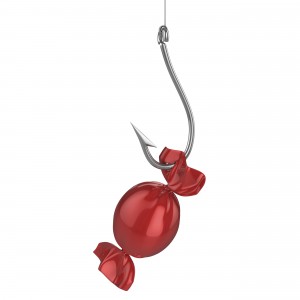Blog checklist: content marketing tips for staying on point
August 14, 2014
Let’s face it. Even the most well thought out strategy still requires a lot of time in the execution phase to ensure your posts will attract the right readers. Here’s a quick blogging checklist for crossing and dotting all necessary letters before hitting publish:
Topic:
- Is created with a target persona in mind – unless yours is a personal blog, it really shouldn’t be a place to freestyle and write about any topics that come to mind. What matters to your buyer personas?
- Helps solve a problem – by doing your homework up front and creating a persona, you know what your prospects’ pain points are. How can you help alleviate them through relevant blog posts?
Headline:
- Hooks your reader – be provocative, tease your readers a bit, tell them how this post is worth their time.
- Contains a long-tail keyword – long-tail keywords are phrases related to your post, crafted in a way that people would search for them. They are easier to rank for in search results than more generic and competitive terms. Think “social media best practices” vs. “social media.”
- Is no longer than 60 characters – most search engines will cut your title off if you go over 60 characters. It’s best to keep your keywords in the front of your headline to prevent this from happening.
Body copy:
- Is of the highest quality – this really should go without saying, but if your post is chock full of errors and sloppy sentence structure, you may lose a potential customer with a bad first impression.
- Uses subheads and bullets – even writers don’t pore over every word when reading someone else’s blog posts. Be sure to guide your audience through with bold headings and bullet points, allowing for easy scanning.
- Contains links to related content – help your readers by linking to relevant topics both on your own site and on third-party sites.
- Includes long-tail keyword(s) – use one or two of your targeted long-tail keywords in various ways throughout your copy. Don’t keyword stuff, use key phrases in a conversational way that will make sense to the reader.
Image(s):
- Include at least one – posts with visuals perform better, at a rate of 94 percent according to Printing House Press. This is also very important in getting clicks via social media.
- Be interesting – offbeat visuals that are creatively related to your topic will entice readers to click and read on.
- Give credit where credit is due – around here, we usually play it safe and purchase images via Thinkstock for use in our materials. You can also give photo credits and link to your sources when not using your own images or purchasing stock ones.
SEO:
- Keywords are part of the URL – see how the URL for this blog post includes our title, which just so happens to include a long-tail keyword? This is no coincidence. Use canonical URLs for optimizing your posts for search.
- Contains a meta description – your meta description is what appears as the brief summary in search results. Be sure to include your long-tail keyword and keep it to 160 characters or less.
- Includes alt. tags – because your images may not appear in all browsers (due to user settings) it’s important to include alt. tags that briefly describe the image. These also boost search ratings, so include a keyword (without stuffing).
Social media:
- Messages are tailored to each platform – chances are, your followers are receiving messages from you in more than one feed. Switch up your messaging for Twitter, Facebook, Google+, etc.
- Posts appear in the right place at the right time – timing is everything when it comes to promoting your blogs on social media. This snazzy infographic breaks it down for you.
Want more best practices for content marketing, PR and beyond? Download our free ebook, The Marketing Strategy Playbook, today.










